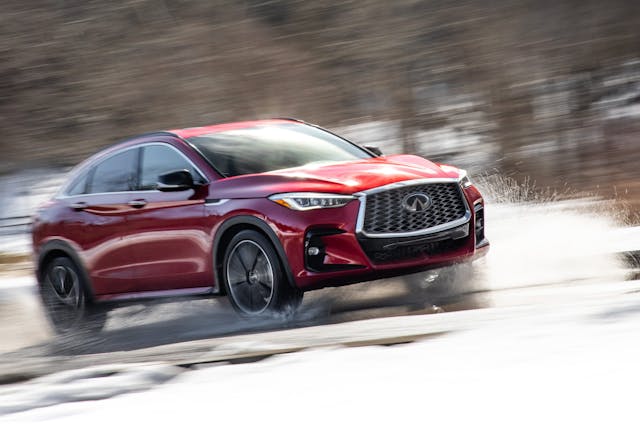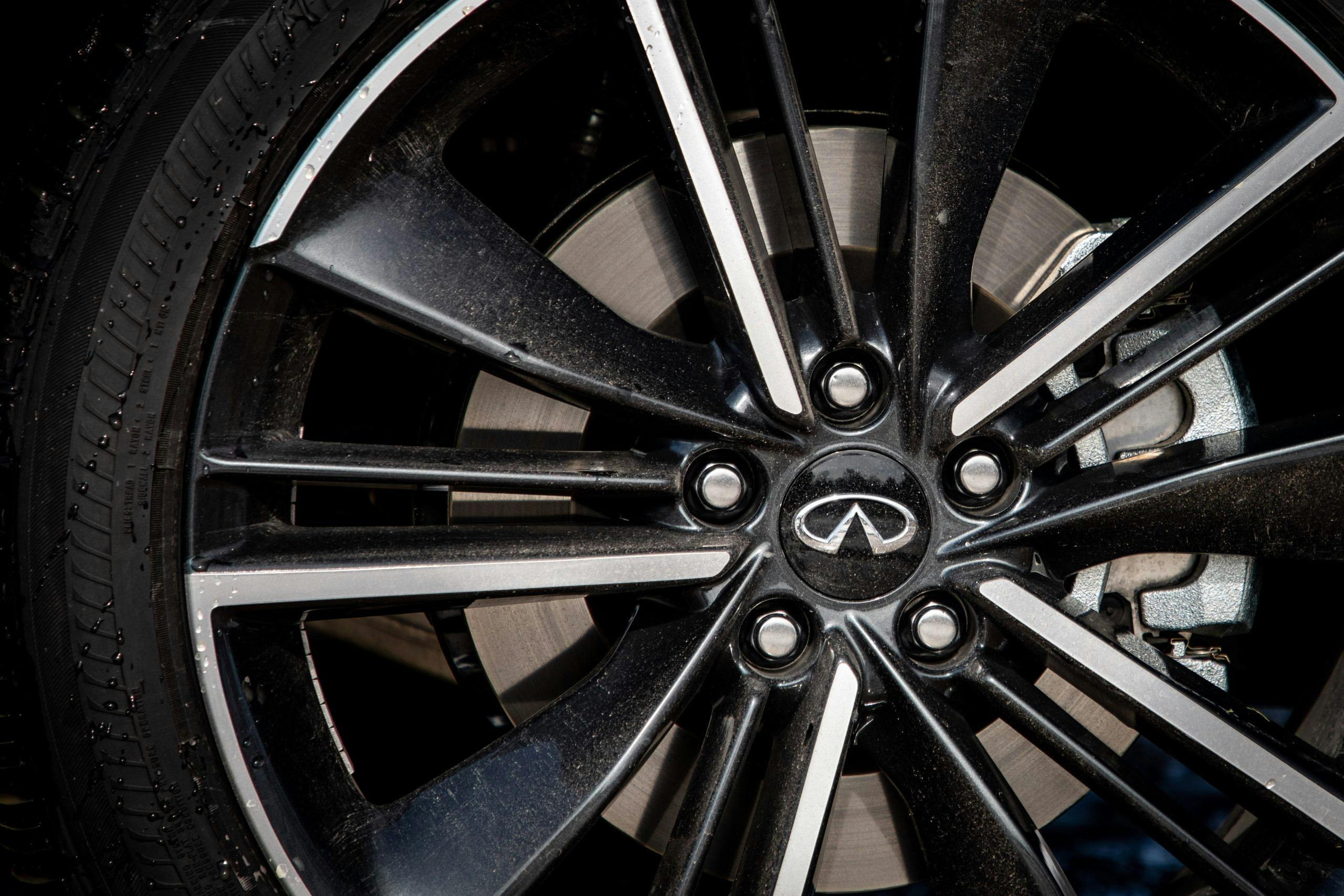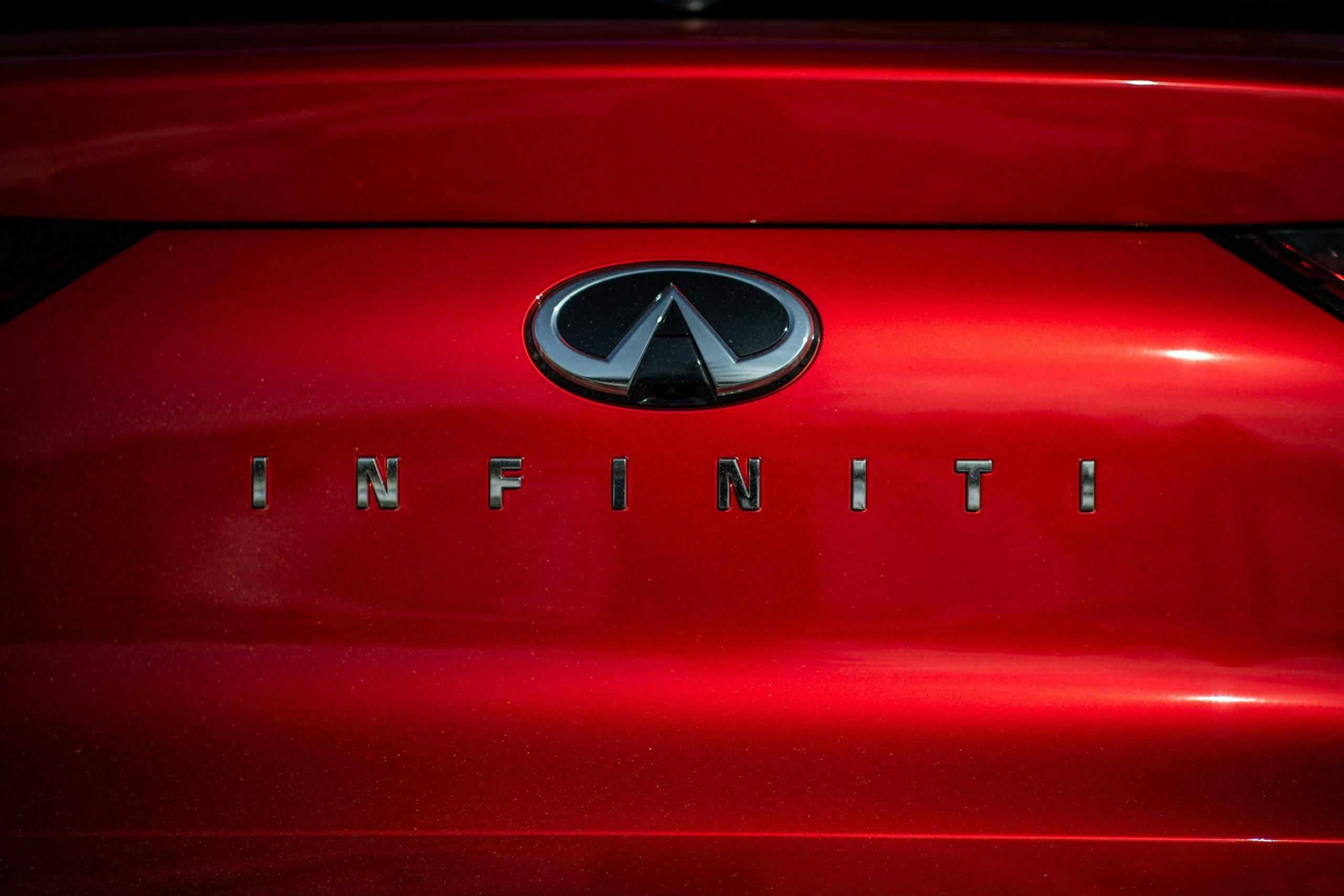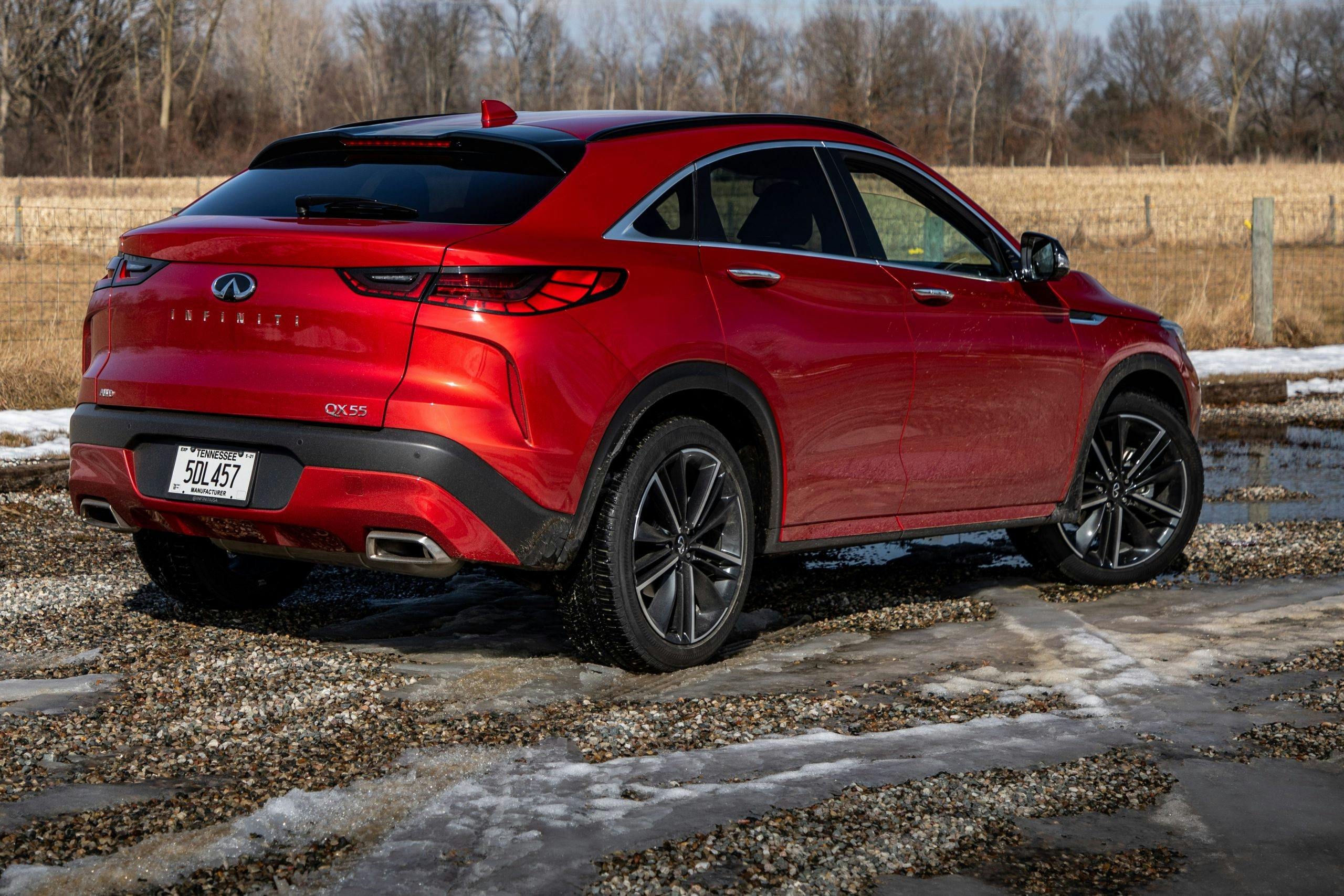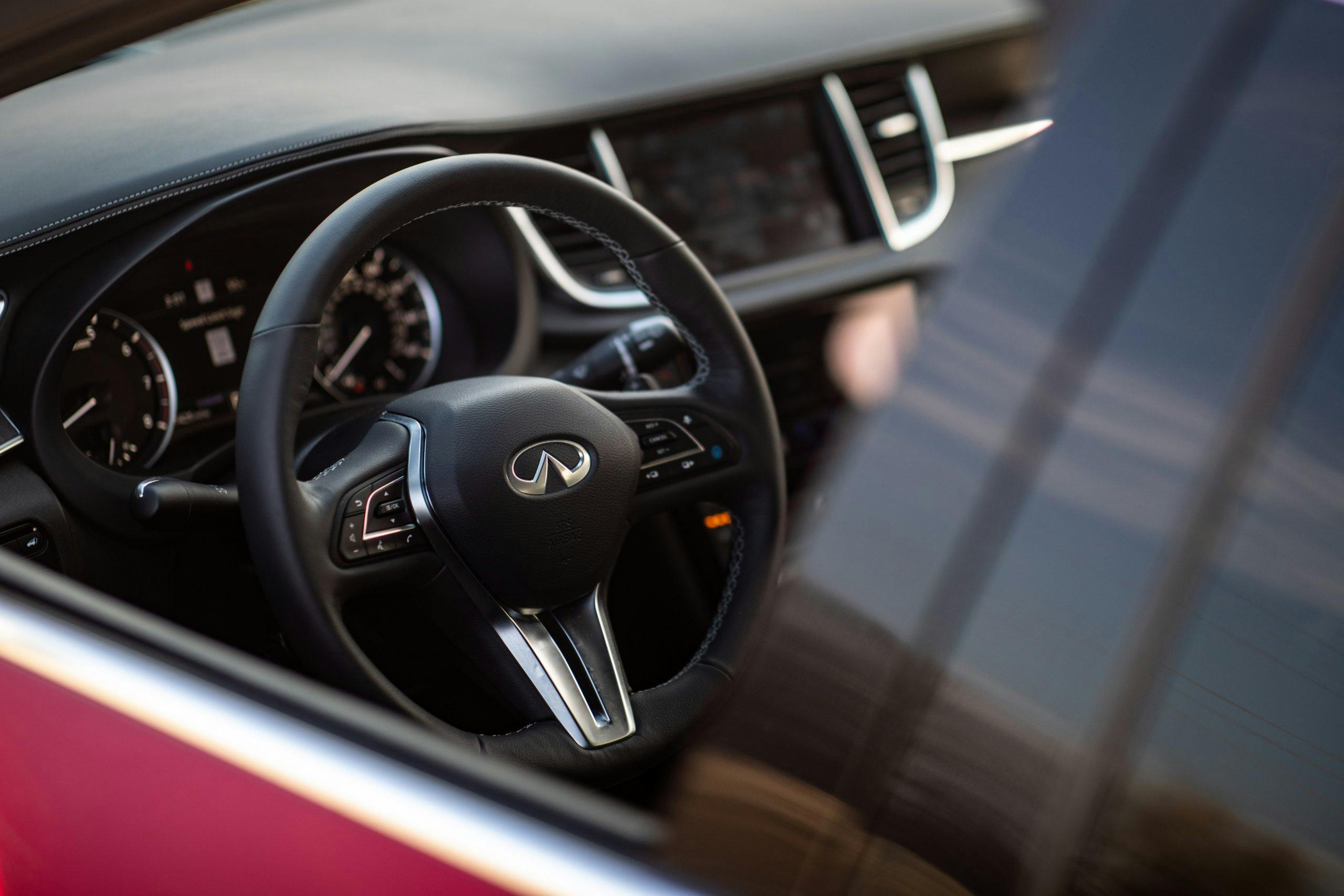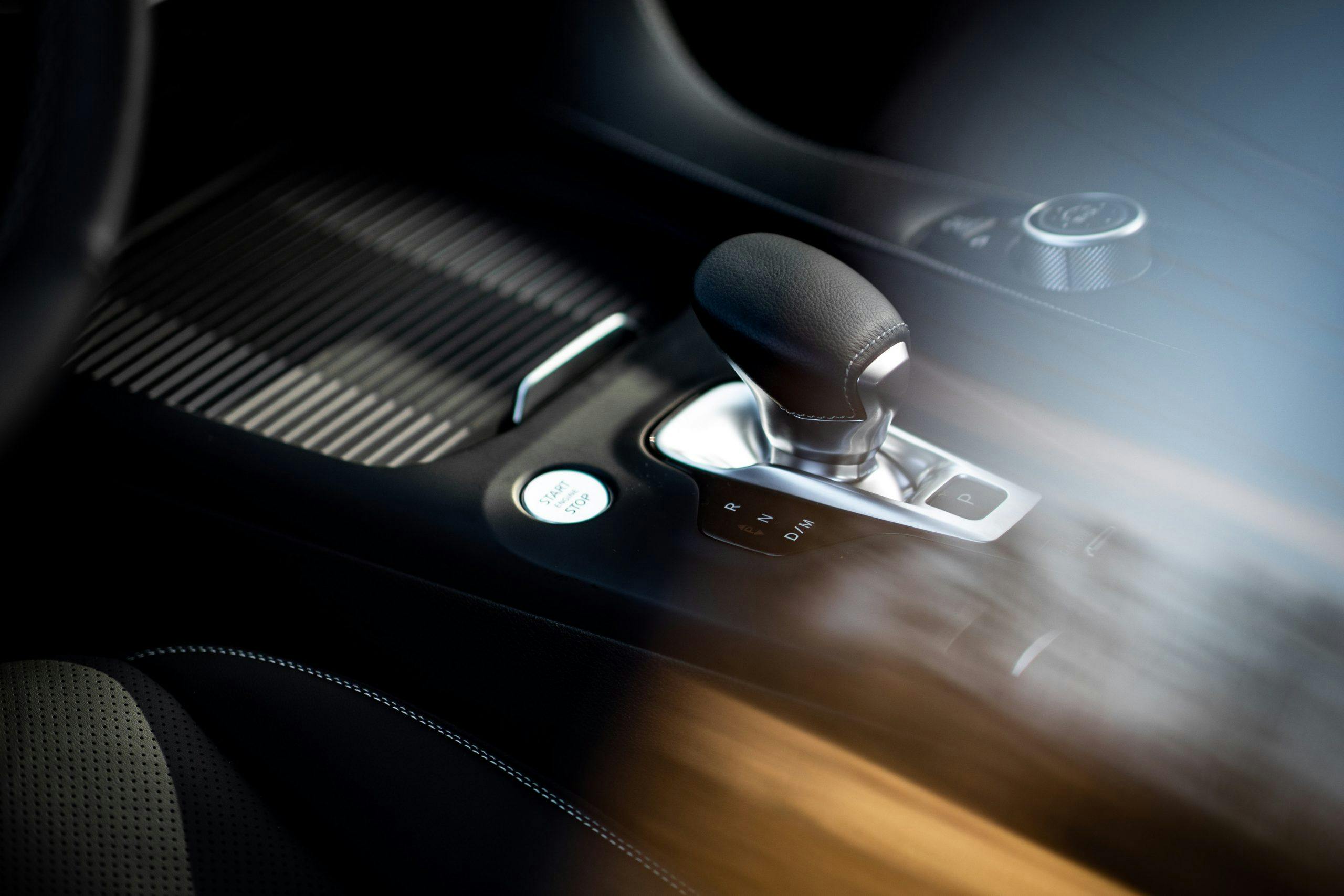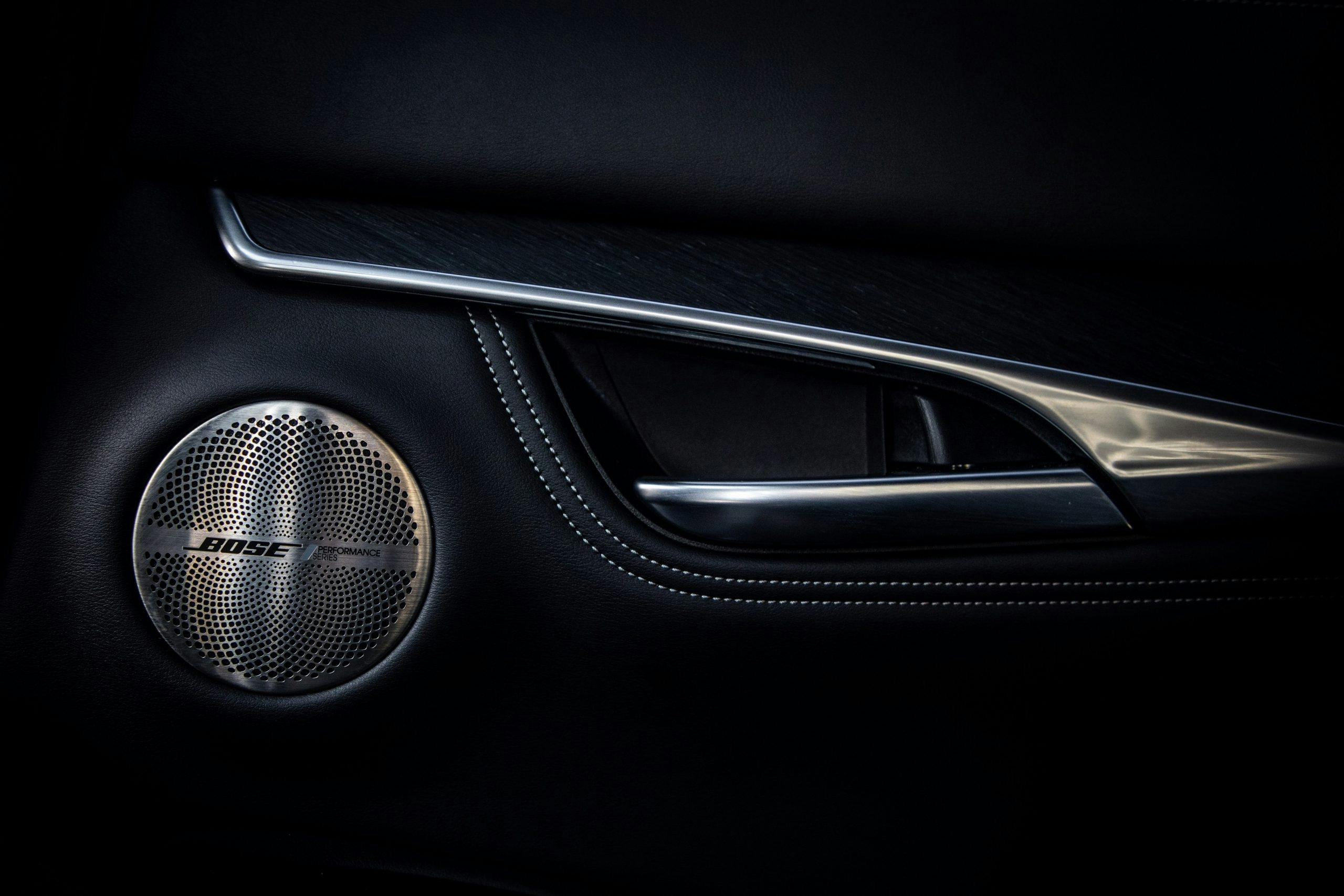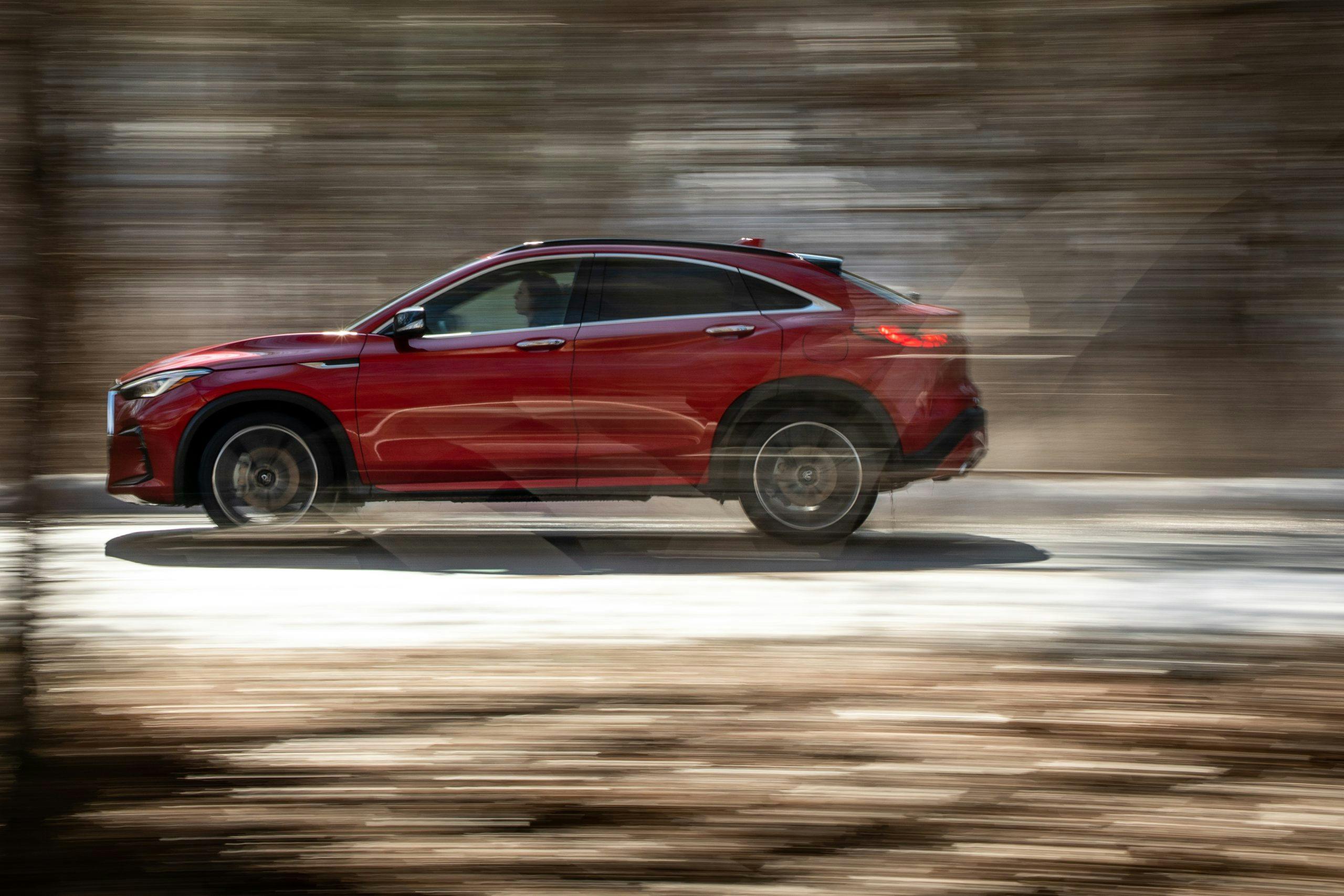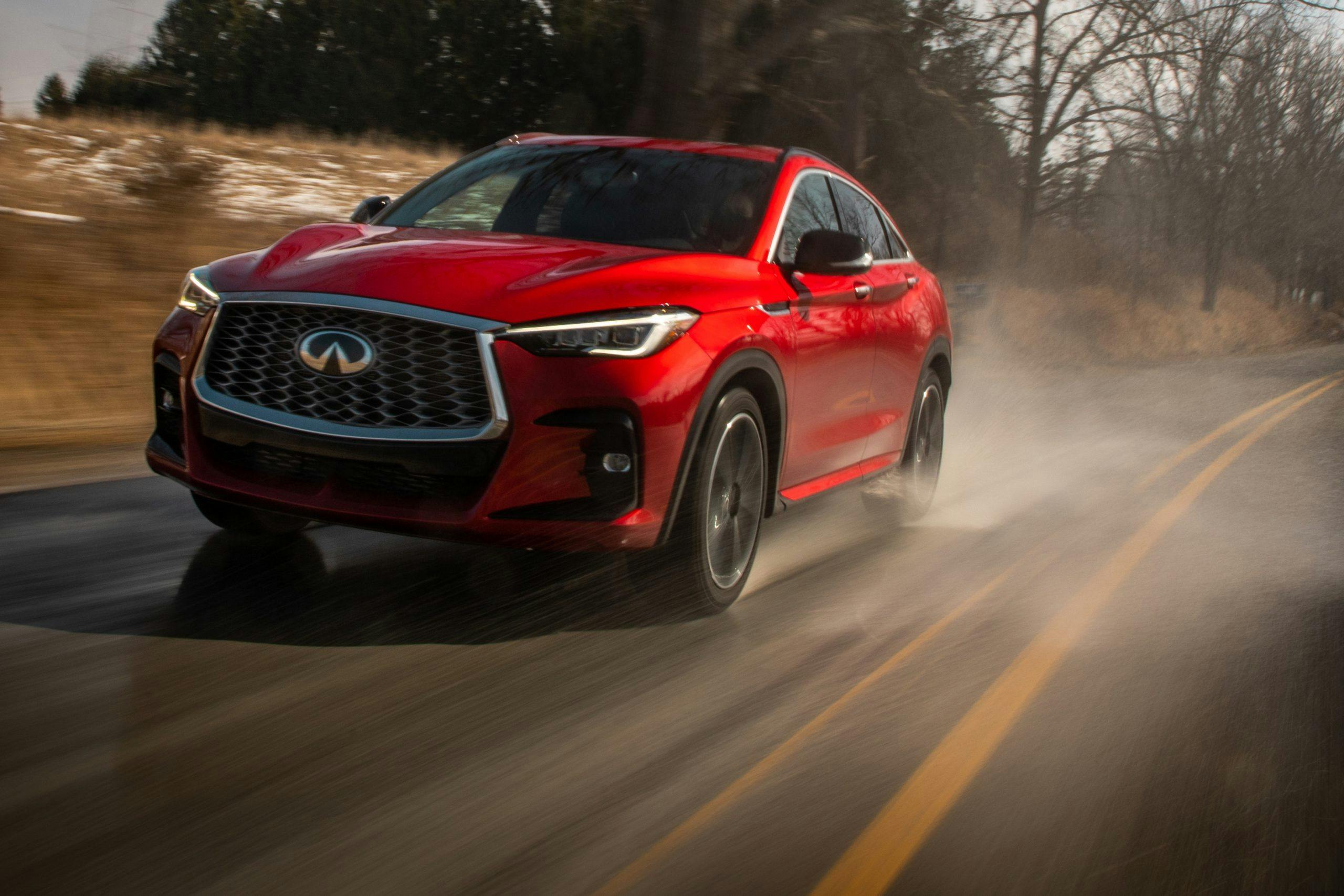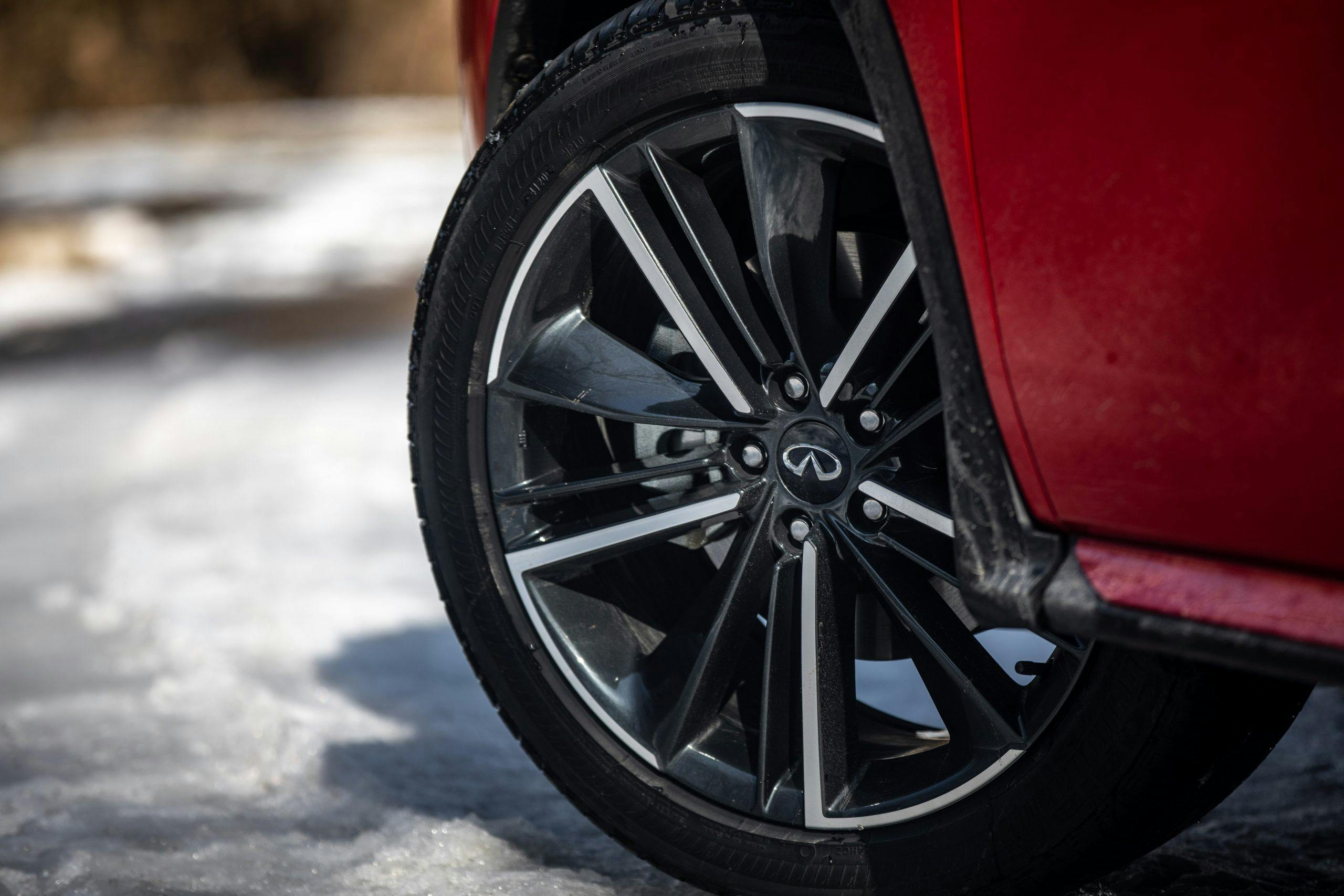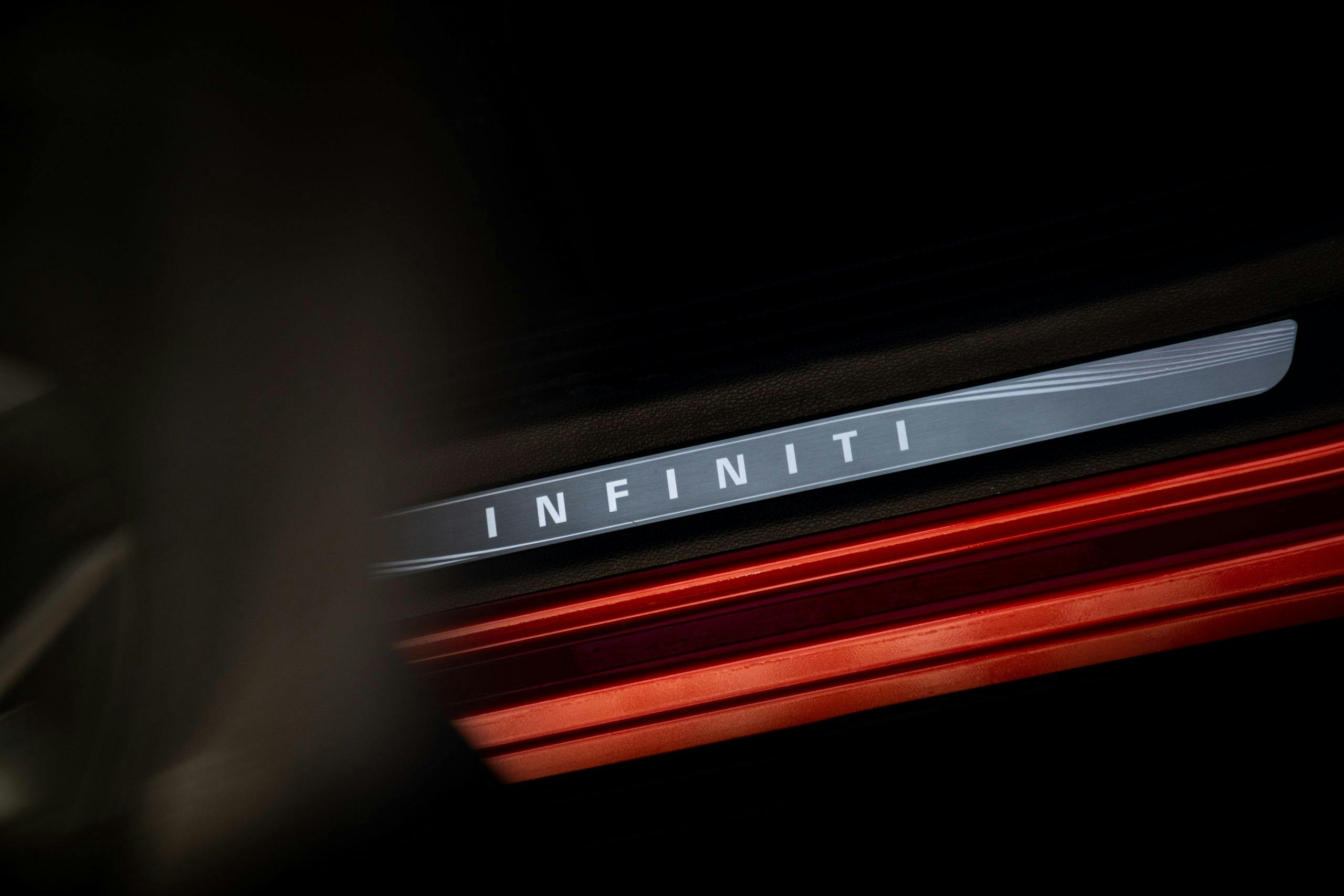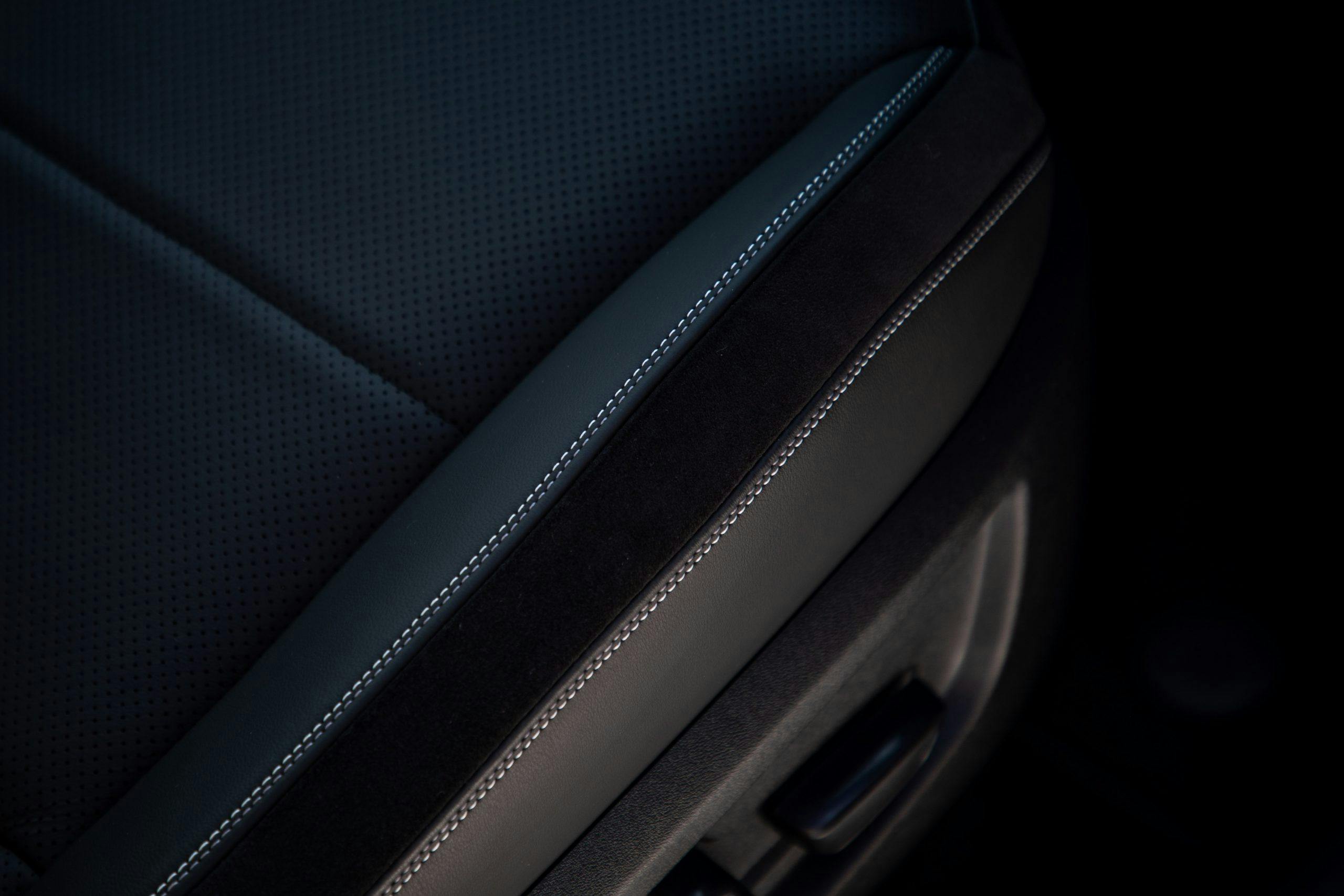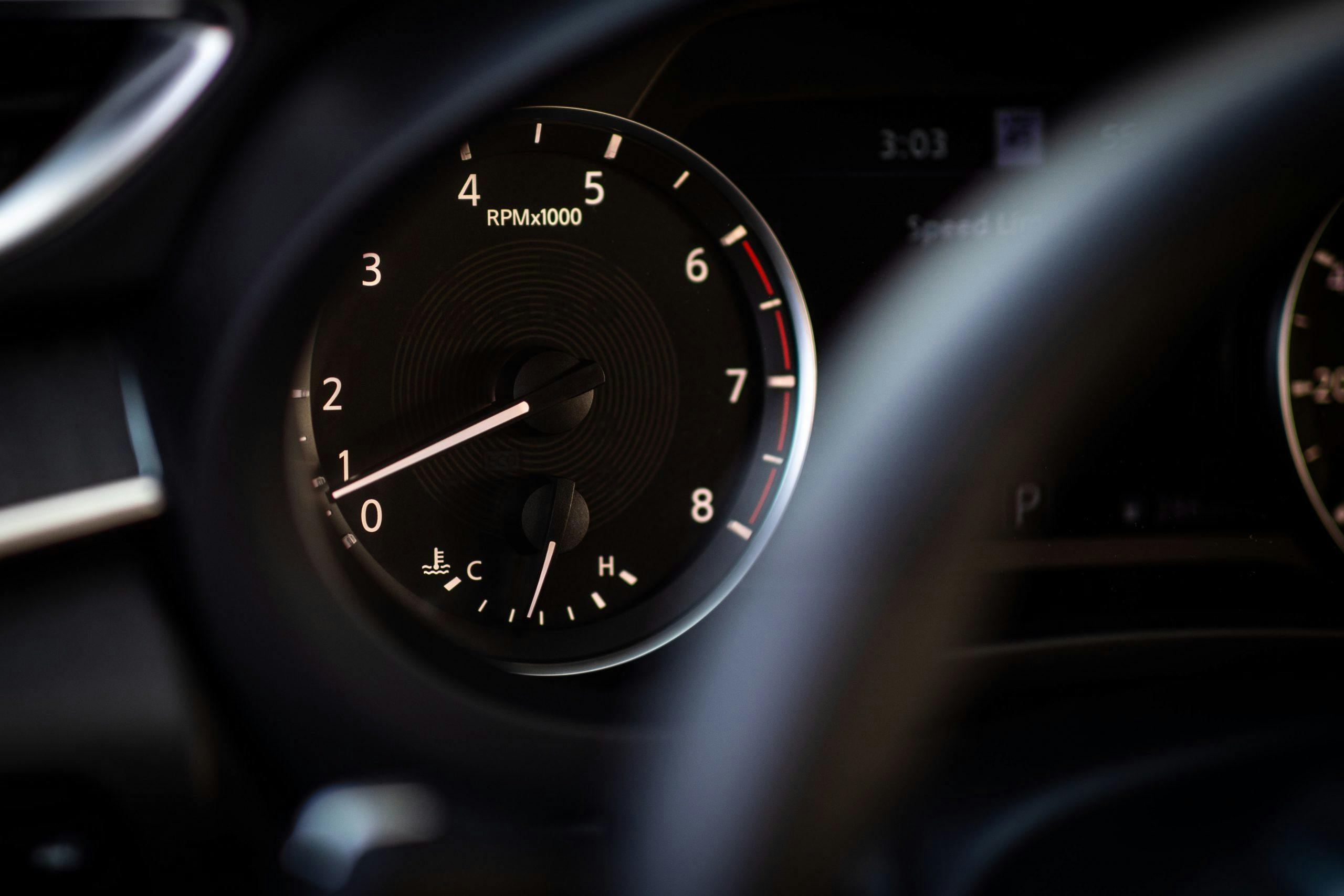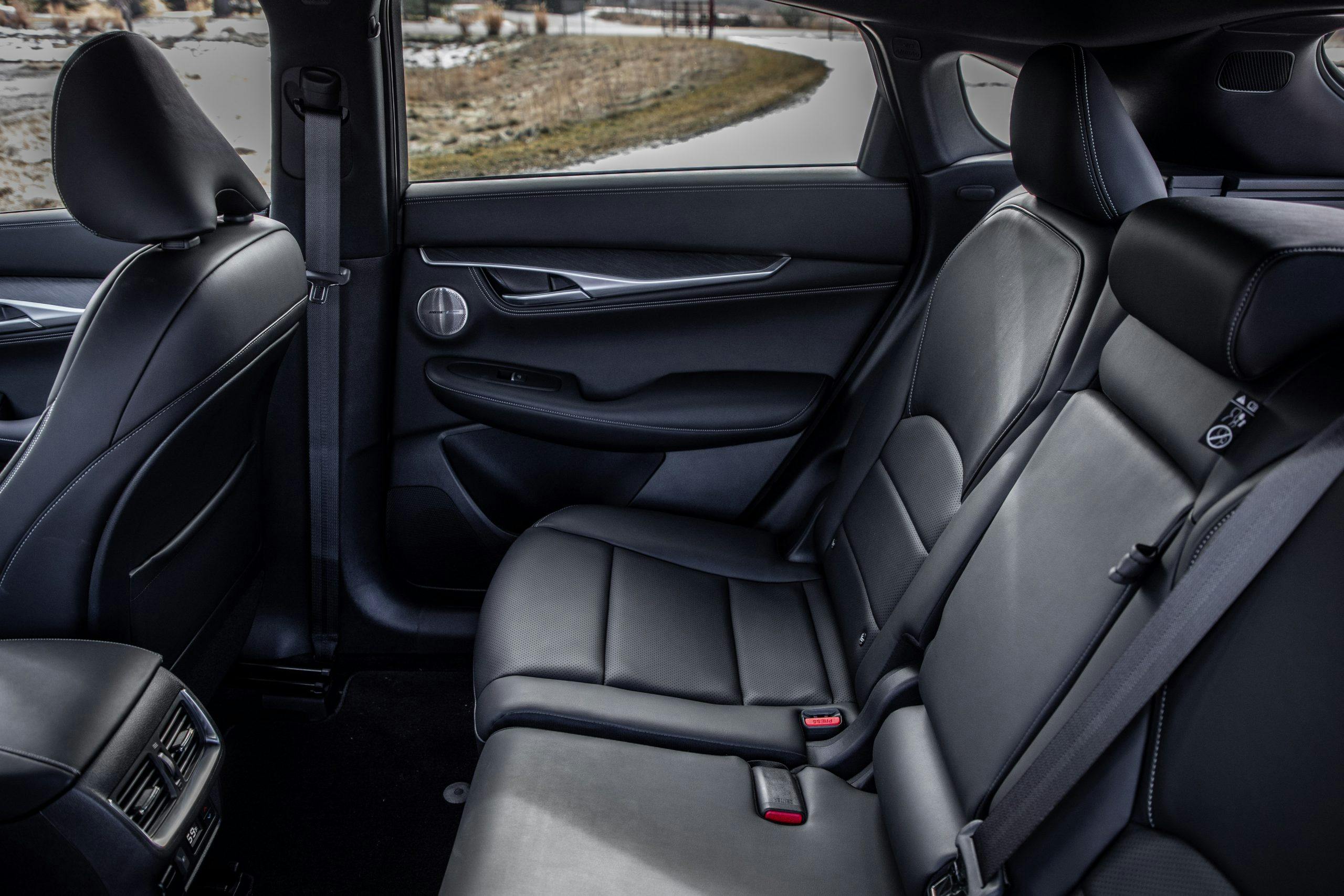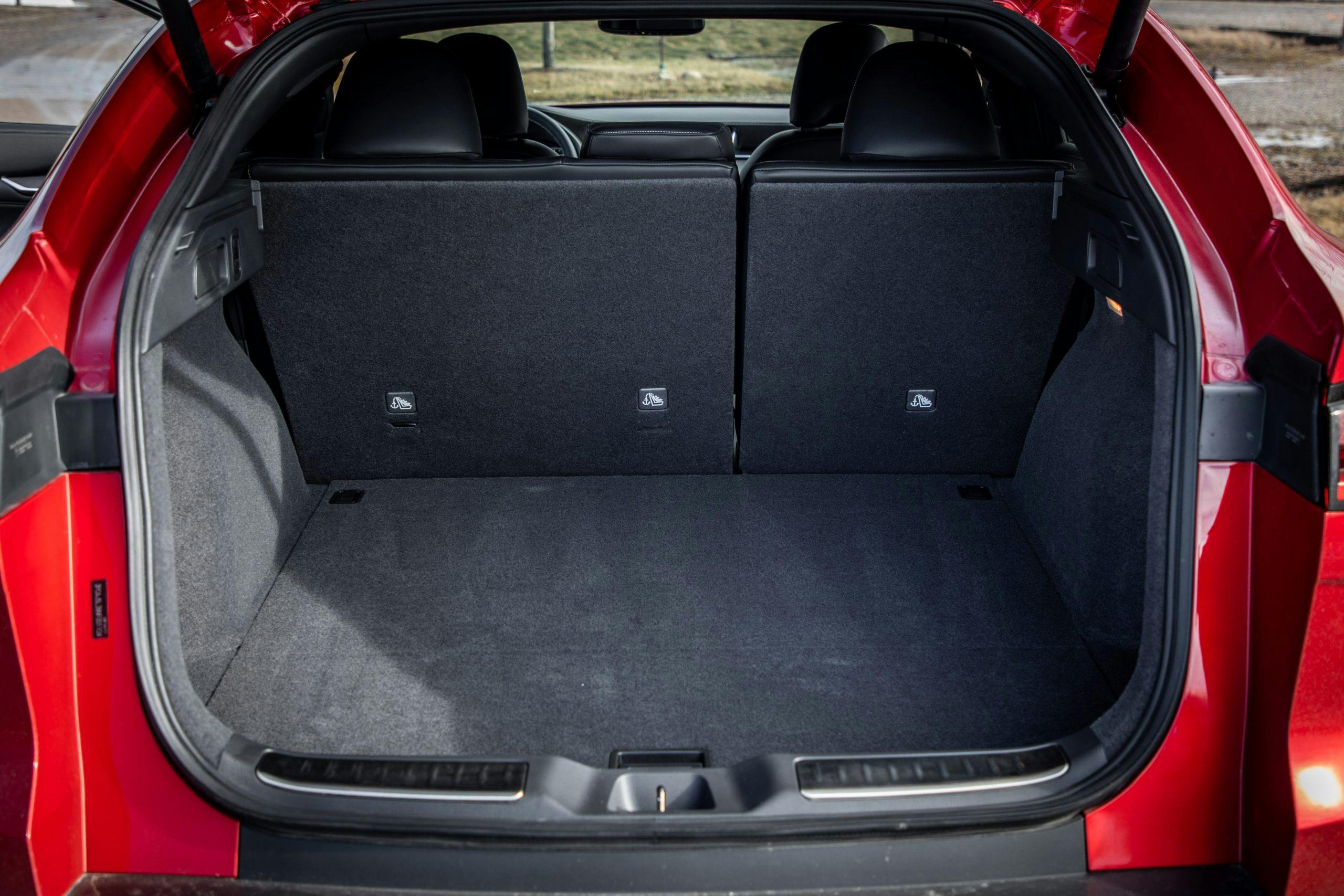Review: 2022 Infiniti QX55 Sensory
“It looks like it’s trying too hard.”
My 24-year-old friend tilted her head at the red Infiniti QX55 in the coffee shop parking lot. “Is it a car? Or an SUV?”
“Well … yes.”
“And why are the wheels so big?”
“They’re supposed to make you think of, you know, a sports car.”
The 2022 QX55 is Infiniti’s bid for hip, city-dwelling young ’uns who prioritize style, luxury, and technology. To court the youthful and chic, Infiniti took the QX50—its two-row, compact SUV—and gave it a trendy haircut, raking back the roofline and enlarging the grille to Bavarian proportions. Style it has, in spades—but inside, luxury and technology are inconsistently executed. In the saturated $50K–$60K compact-crossover segment, that’s like scuba diving in shark-infested waters with a paper cut.
Infiniti has good reason and great need for this aggressively trendy vehicle. The brand was among the first to hit on the compact luxury SUV formula: Back in 2003 (the same year in which Porsche debuted the Cayenne), Infiniti repurposed its FM platform, which underpinned its M and G sedans, with a hatchback body and a slight lift, calling it the FX. It came with a V-6 or a V-8 engine, in rear- and all-wheel drive, and in 2005 became the first passenger vehicle sold in the U.S. with an available lane-departure warning system.
Over the next four years, however, Infiniti’s U.S. sales slumped, from 138K in 2005 to 81K in 2009. Buoyed by its stalwart G series sedans, the marque introduced enough SUVs to claw its way to 153K units sold in 2017, though it managed to thoroughly befuddle the general public with a constantly shifting scheme of alphanumeric names in the process. Sales numbers have since nosedived (even before COVID-19 hit). Infiniti needs to charm buyers, and it needs to sell cars.

Enter our $58,975 QX55 test vehicle, resplendent in Dynamic Sunstone Red and, in the top-tier Sensory spec, laden with both major packages: ProAssist ($800), which bundles LED headlights with adaptive cruise control and lane-keeping/lane-departure aids; and ProActive ($1600), which adds a head-up display and Infiniti’s ProPilot Assist (more on this later—it complements the cruise control with steering assist and stop/hold).
As with most of Infiniti’s recent offerings (the whale-like, Armada-based QX80 being the obvious exception), exterior styling is the QX55’s strong suit. Its curvaceous lines make the Infiniti more visually exciting than the Mercedes-Benz GLC or Porsche Macan and more elegant than the BMW X4. Beneath the skin, very little is new. The QX55 rides on Daimler’s MFA-2 platform, the same modular front-engine, front-wheel-drive architecture used by the less aggressively styled QX50 since its debut in 2017. Both Infiniti vehicles will be built alongside the smaller GLA and GLB subcompacts at the jointly owned Daimler-Nissan COMPAS factory in Aquascalientes, Mexico.
Unfortunately, the QX55 fails to support the dynamic promise of the exterior with a cohesively luxurious experience inside the cabin. (Anyone who’s sat in or owned a 2019 or newer QX50 will recognize the interior stitch-for-stitch.) The dash and center console are composed of pleasantly dynamic lines and, together with the steering wheel, finished in leather that’s actually sourced from cows and accented with suede. The starter button and surrounding panel, however, are plastic and cheap-feeling, as are the featureless, rectangular buttons framing the 7-inch lower touchscreen. While resolution is sufficiently crisp, the icons are staid and won’t impress any fashionable youth with a smartphone in their pocket. The upper, 8-inch screen, thanks to Infiniti’s outdated map display, packs all the visual flair of a mid-2000s Motorola Razr. Connect the wireless Apple CarPlay, which populates on this upper screen, and you jump back into 2021.
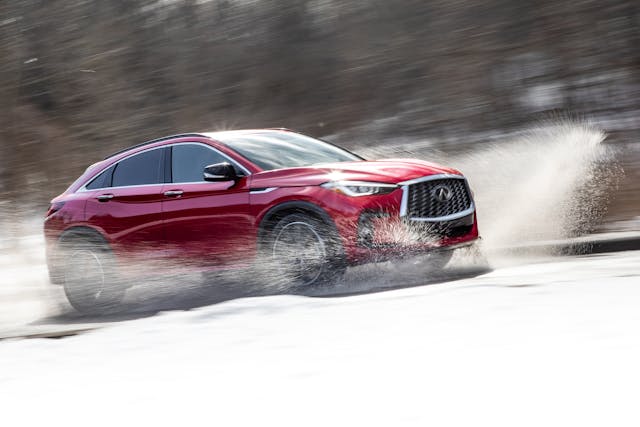
Opt for the QX55 over its QX50 sibling and you get standard AWD—of a sort. Unlike all-wheel-drive variants of the competing Stelvio and the X4, which are adapted from rear-drive platforms, the QX55 is essentially a front-driver with a transverse-mounted engine, whose CVT is retrofitted with a transfer case that can send up to 50 percent of available power to the rear wheels. The 268-hp turbo-four astride the front axle is a neat bit of kit. Where you’d typically find a crankpin connecting the piston rod to the crankshaft is an intermediary, multilink assembly that, with the help of an electric motor, can adjust the top-dead-center position of each piston on the fly and, by controlling the stroke, alter the compression ratio between 8:1 and 14:1 based on driver demand.
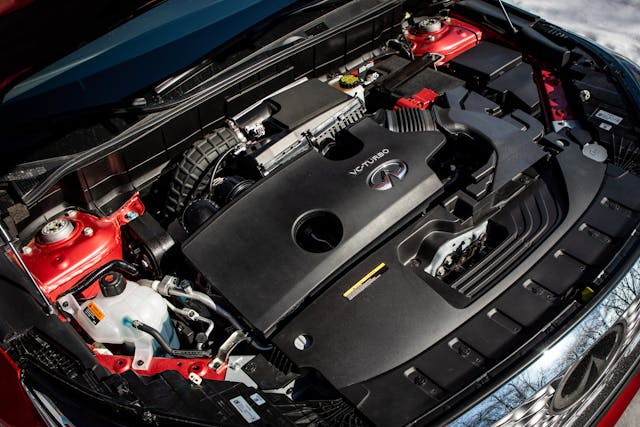
For such a complicated affair, the powertrain isn’t fussy. Most around-town driving is undramatic, though steering is robotic. Find a conveniently long onramp, floor the accelerator, and the CVT—which has been re-mapped for the QX55—will actually approach redline between shifts. Especially under hard acceleration, the four-pot’s tenor is noticeable, but not unpleasant. The QX55 is no hot rod, but, for a $57K vehicle tailored to daily use, it packs sufficient punch. While the 20-inch wheels and skinny rubber generate significant road noise over bumps, the suspension cushions you from excess jostle.
One note: Beware of the car wash. The palm-sized shifter uses a single fulcrum or hinge where it meets the console, rather than a gate-like arrangement, and must be delicately rocked between R, N, and D. Neutral likes to hide between the two, and may require some parking-lot practice to pinpoint. If you are suffering the least amount of embarrassment or stress—as, for instance, when a flock of teenage car-wash attendees slowly gathers around your shouty red vehicle wondering why you fail to understand an instruction as simple as put it in neutral—that middle gear is well-nigh impossible to find.
Escape to the interstate, and Infiniti’s ProPilot assisted cruise control system shines. During multi-hour stints on Michigan’s highway 96, the QX55 adapted predictably and well to other drivers. With the system activated, the vehicle didn’t wander or bounce between lane lines, and it handled gentle sweeping turns with poise. The Bose 16-speaker system was disappointing: It’s adept at driving bass, which is enough to impress most devotees of the U.S. Top 100, but struggles with more low-key, acoustic tracks. Norah Jones and her piano sounded strangely artificial.

Infiniti’s two-screen, InTouch display feels three years old—because, in model years, it is. The system does the job, but lacks the finesse and polish required to satisfy someone who’s just ponied up $57K. Most will set up Apple CarPlay and never think twice about the outdated onboard navigation, but the infotainment is the QX55’s obvious weakness. Mercedes-Benz has more cash to splash on its interiors—from its MBUX infotainment system to a fully digital instrument cluster to tiny knurled volume controls on the steering wheel. The GLC has the Infiniti beat hands-down here.
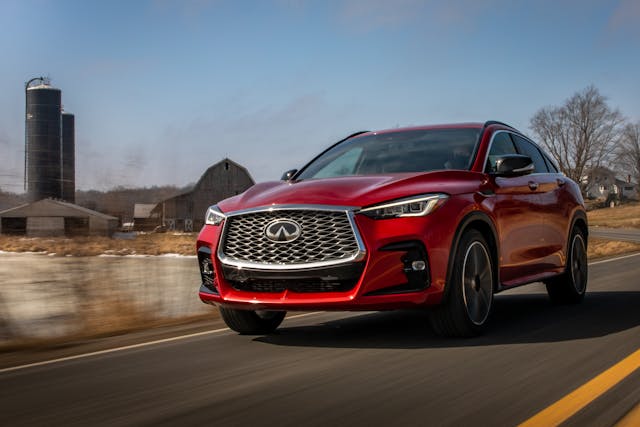
The base QX55 trim, Luxe, starts at $46,500 and, on paper, undercuts its more mainstream rivals: the Audi Q5 Sportback ($48,895), the BMW X4 xDrive30i ($52,595), the GLC Coupe ($52,700), and the base, four-cylinder Porsche Macan ($53,450). The Infiniti’s most direct competition, the FWD-based Acura RDX, stakes the strongest claim to a bargain, with a base price of $40,950. Critically, however, the Luxe misses out on the options that most customers will want, like the ProPilot Assist smart cruise control and the Bose audio. The most popular trims will likely be the upper two: Essential ($51,600), and Sensory (our tester, $57,050).
Compared to the German heavyweights (or to its domestic competition), the QX55 Sensory fails to be a truly compelling package, or even a good deal. The Infiniti will probably fare better against crossover shoppers who are avoiding the mainstream German brands. Unfortunately, Alfa Romeo’s Stelvio is just as stylish as the Q-Thing, cheaper at every trim level, and, since it’s built on the same chassis as the Giulia sports sedan, has a better claim to performance. (If you really want to be avant-garde, and you crave useable cargo capacity, go look at Volvo’s V60 wagon.) At best, the QX55 will be a middling competitor in the compact, coupe-like crossover space. It won’t embarrass Infiniti, but this slash-backed CUV can’t single-handedly revitalize the brand.
2022 Infiniti QX55 Sensory
Base price/as-tested: $47,495 / $58,975
Highs: Bold, fashionable styling. Technically impressive engine. Polished adaptive cruise-control system.
Lows: Inconsistently executed interior marred by outdated infotainment.
Summary: Like a high school student with impeccable style who carries a flip phone, the QX55 risks missing the group message inviting it to the big weekend party.
